How to Photograph Women, Ladies, and Girls
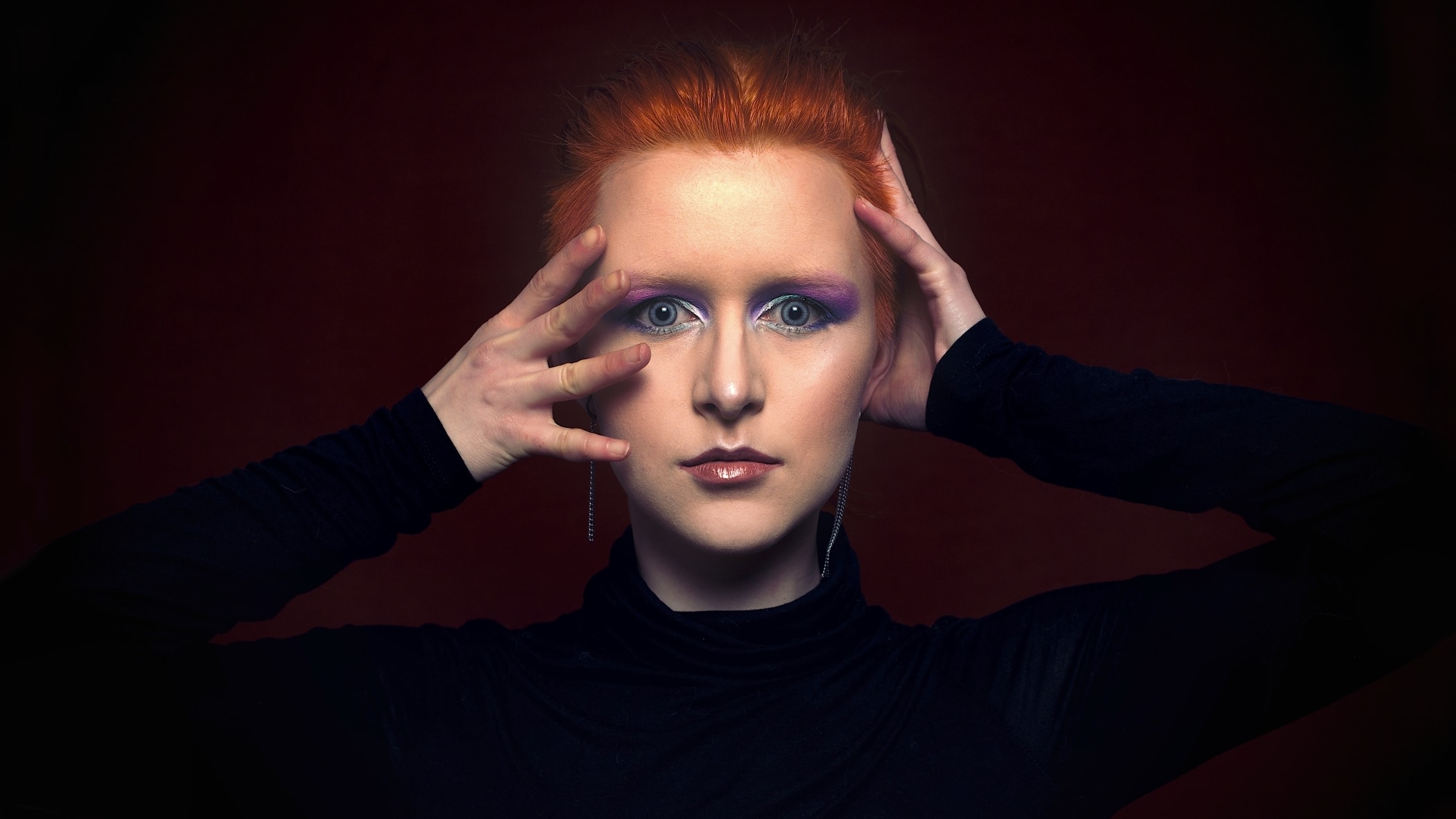
In this article I’ll be leading you through several steps that should help you get good photographs of women. And telling you how to assess their strong and weak sides, help them with posing, choose an angle, retouch the pictures, and more. Based on opinions I’ve gathered from models themselves, I’ve written up this overview of what women like during a shoot—and what bothers them.
The model-photographer relationship is the cornerstone of every shoot, and so it needs to be mutually beneficial. There are a few principles I recommend sticking to if you want great photos and satisfaction for yourself and your model. Every model and every photographer can see model shoots differently, but I’ll try here to touch on some basics that won’t disappoint.
We’ll be looking at:
- Assessing their strengths and weaknesses
- Posing
- Good and bad angles
- The best retouching approaches
Strengths and Weaknesses
If they have a misshapen nose, try shooting from a different angle. If they have small breasts, try adapting their outfit to that in advance or making up for it with their pose. Everything has a solution, but you have to be prepared. If you see that the model’s weaknesses are too visible in a given picture, ask them to try another approach. Feel free to blame it on bad light or a boring angle.
Assessing strengths is more or less automatic, and these are the things that you do tell the model. Within limits, of course. Be sure to mention their nice:
- eyes
- smile
- hair
- chin
- legs
- waist
- neck
- arms
- hands
Don’t hesitate to use words like: “beautiful,” “gorgeous,” or “wonderful.”
Posing
This could easily be a topic for a whole separate article. But I’ll still—briefly—give you a few tips. For example, it’s good to tell your model in advance that she should study up on posing basics. If she’s not experienced in this area, it will help her a lot. For this sort of info on posing basics, she can search on Facebook, Pinterest, or Google.
She’ll also want to try out posing in front of a mirror. Then she’ll see for herself what looks good or bad on her and what poses suit her. Your own posing preparation doesn’t have to end here. I have a Pinterest board with posing instructions on it, for example. It helps me in two ways—first, it helps me learn correct posing so I can then demonstrate it to my models. And second, I send my models this board before a shoot, so they can learn too.
Here are three examples to help you compare good and bad posing. There are hundreds of such photos on the internet; you just have to search a bit.
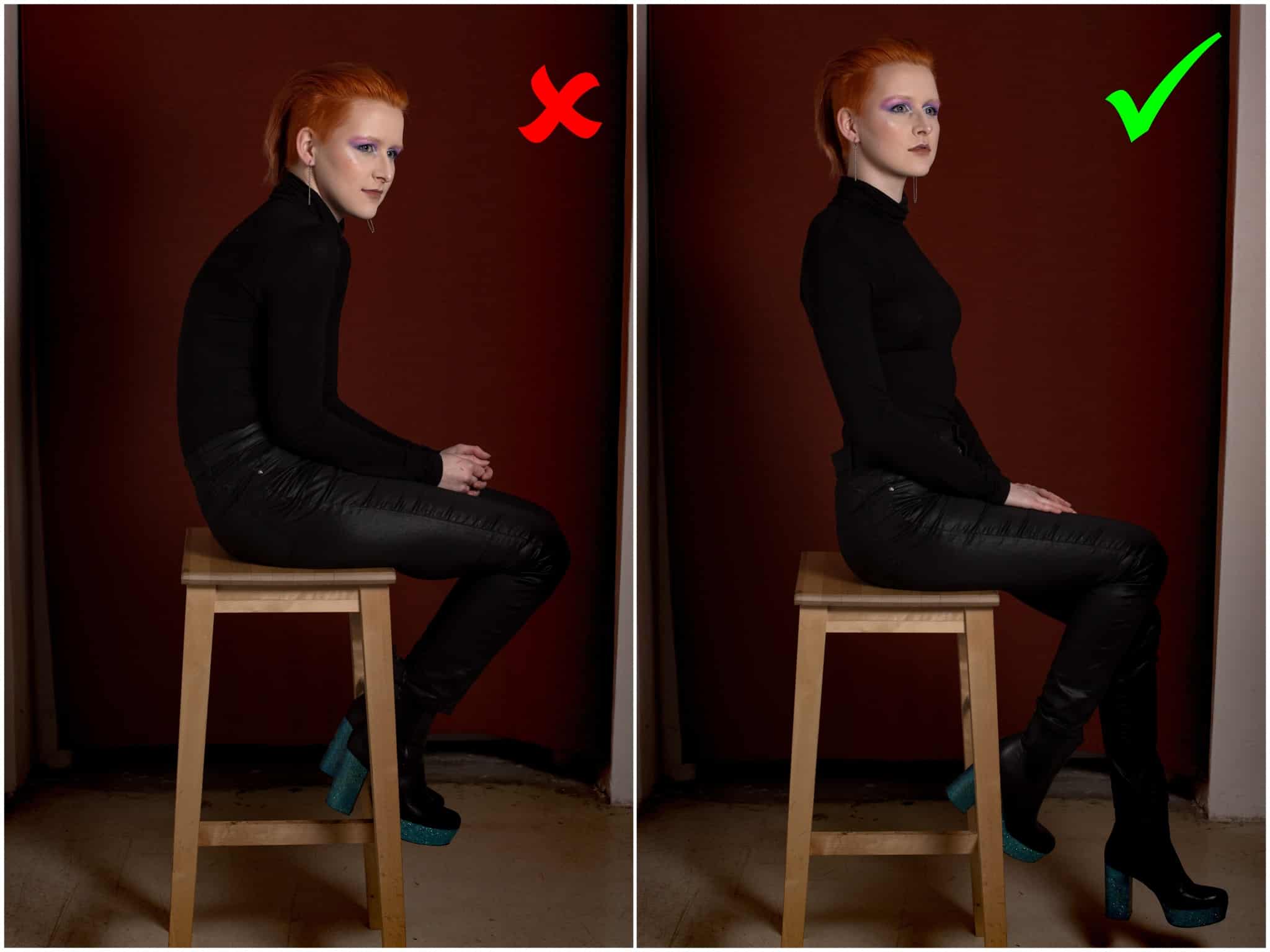
Nikon D750, Nikon 50mm f/1.4 AF-S NIKKOR G, 1/125 s, f/4.5, ISO 200, focal length 50 mm.
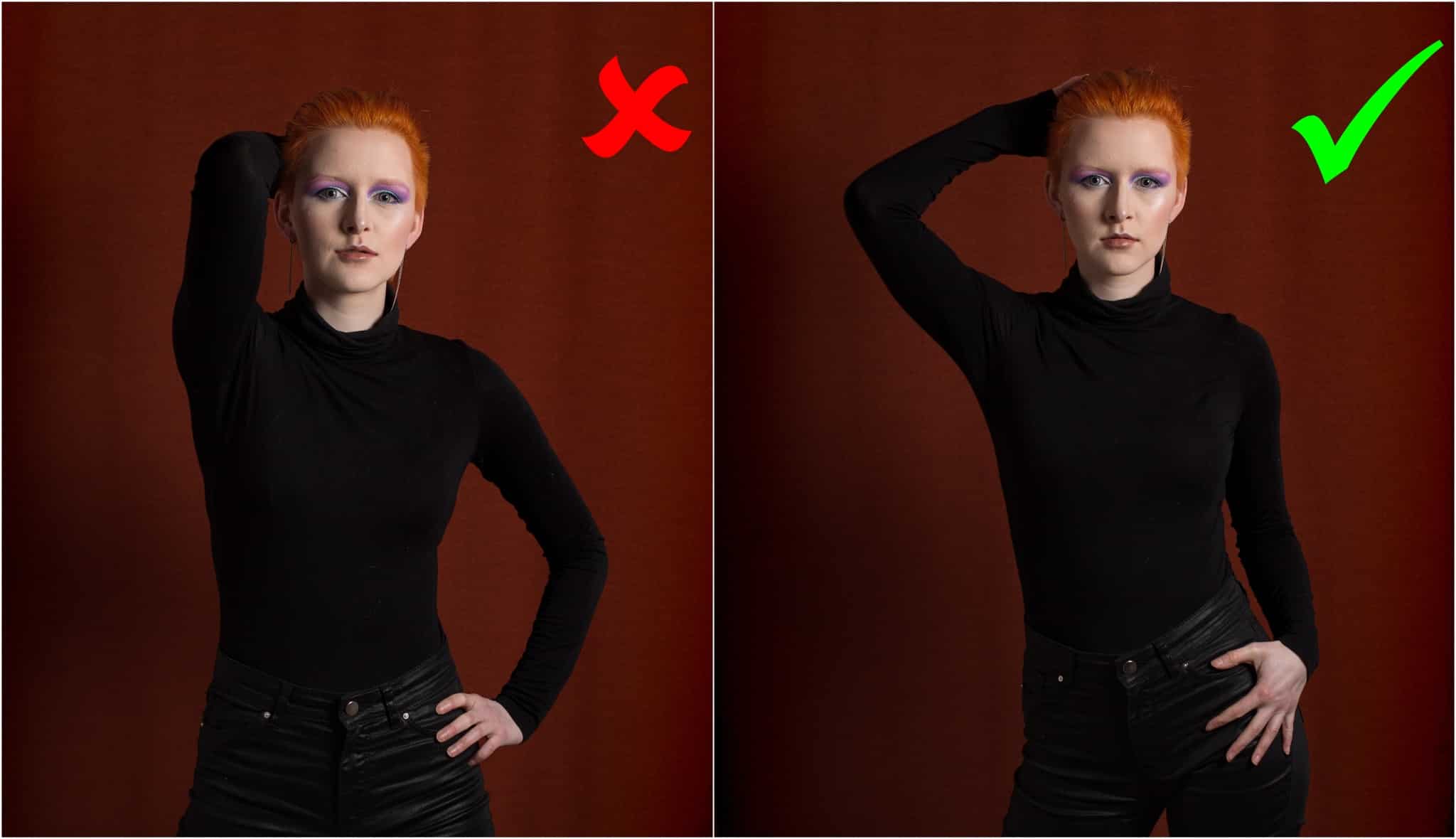
Nikon D750, Nikon 50mm f/1.4 AF-S NIKKOR G, 1/125 s, f/4.5, ISO 200, focal length 50 mm.
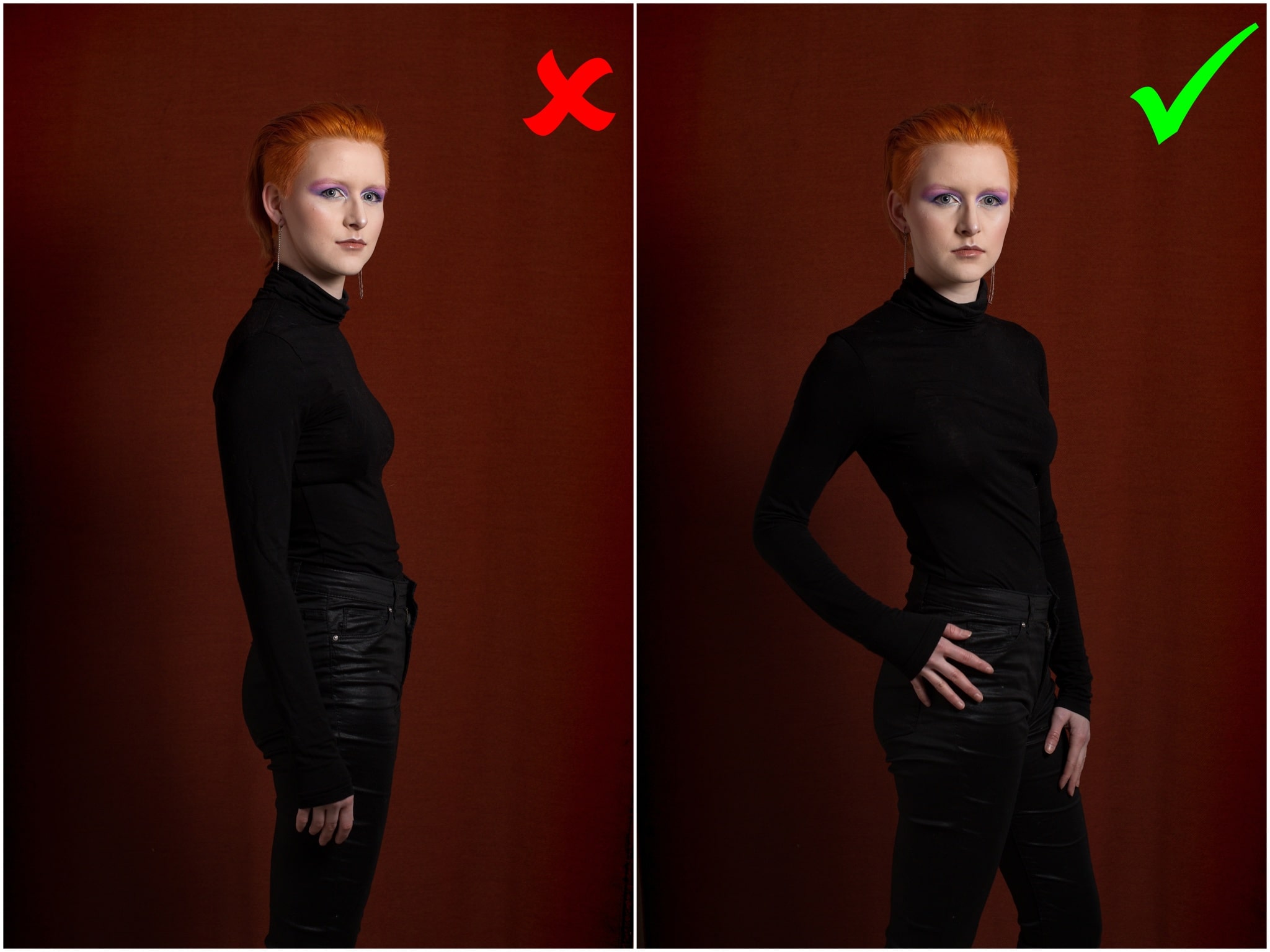
Nikon D750, Nikon 50mm f/1.4 AF-S NIKKOR G, 1/125 s, f/4.5, ISO 200, focal length 50 mm.
And perhaps the most important posing tip: don’t contort your model into positions she dislikes. If certain poses are uncomfortable for her, don’t try to convince her. And definitely don’t try unnatural poses that could end up injuring her.
Good and Bad Angles
Every angle can have a different effect, and your model will look different at different angles. She may have visually long or short legs. An unnecessarily wide jaw or high forehead. You can take 20 pounds off her, or add ten if you choose the wrong angle. The general rule is that extreme angles lead to extreme anatomy. If you photograph a girl from above, her body will most likely look cartoonishly small.
If you photograph her from the ground, she’ll have unnaturally long legs, a double chin, and hidden eyes. All this may not be a problem if it fits the shoot topic or your artistic aims, or you have some other reason to want these effects. But generally it’s controversial and may not be flattering. If you want a natural portrait, then you should neither be lying on the ground nor climbing a stepladder.
Your choice of lens ties in to angles. I definitely would recommend 50 mm or 85 mm fixed lenses, but naturally there are other options too. What I definitely wouldn’t recommend is going below 35mm. The distortion from a wide-angle lens can be unflattering, and it also forces you to stand right in the model’s face, so close that she may feel uncomfortable. Try to stay outside her personal space.
But back to angles—here are two pictures illustrating how much an angle can change how a model looks:
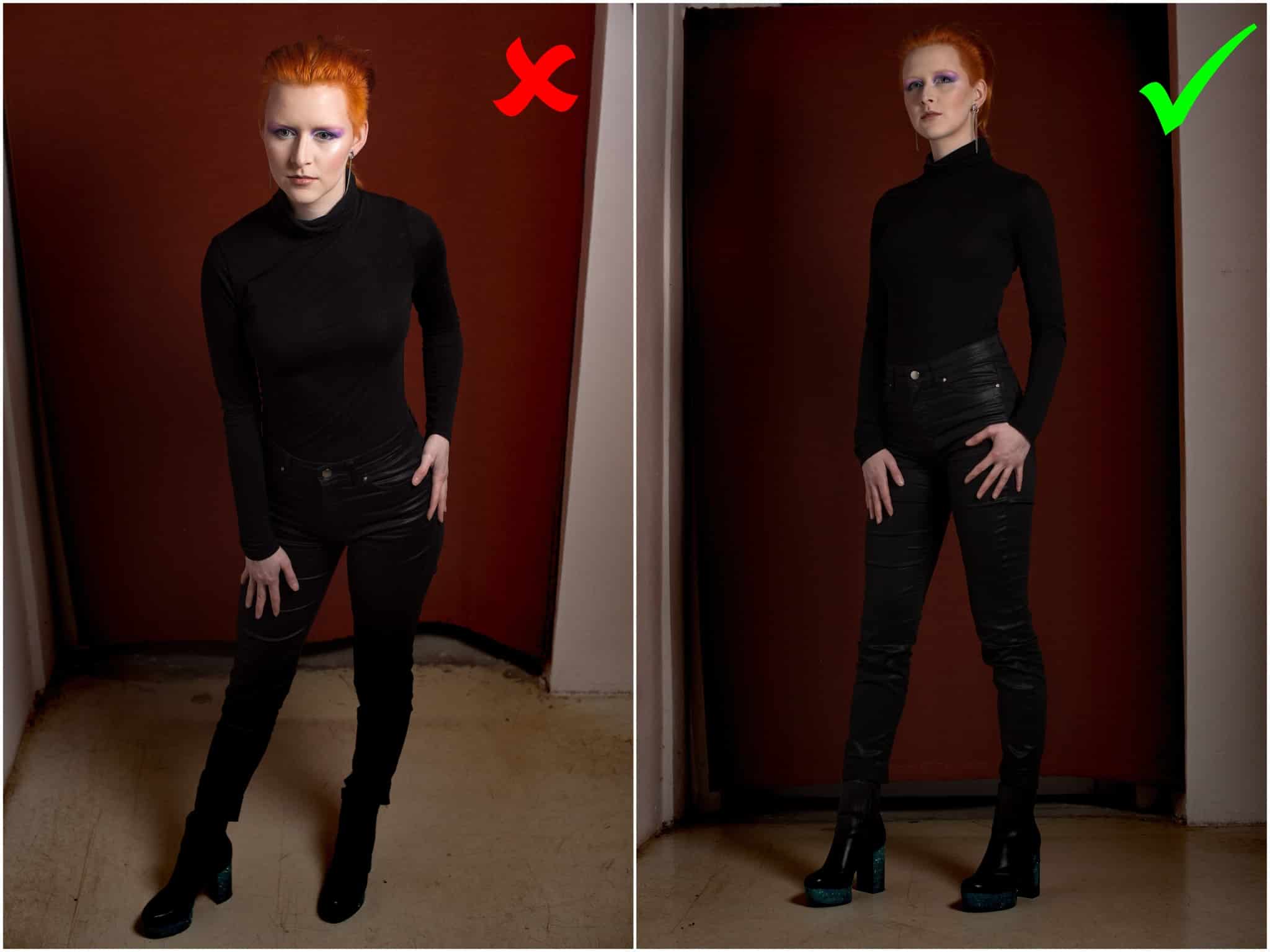
Nikon D750, Nikon 50mm f/1.4 AF-S NIKKOR G, 1/125 s, f/4.5, ISO 200, focal length 50 mm.
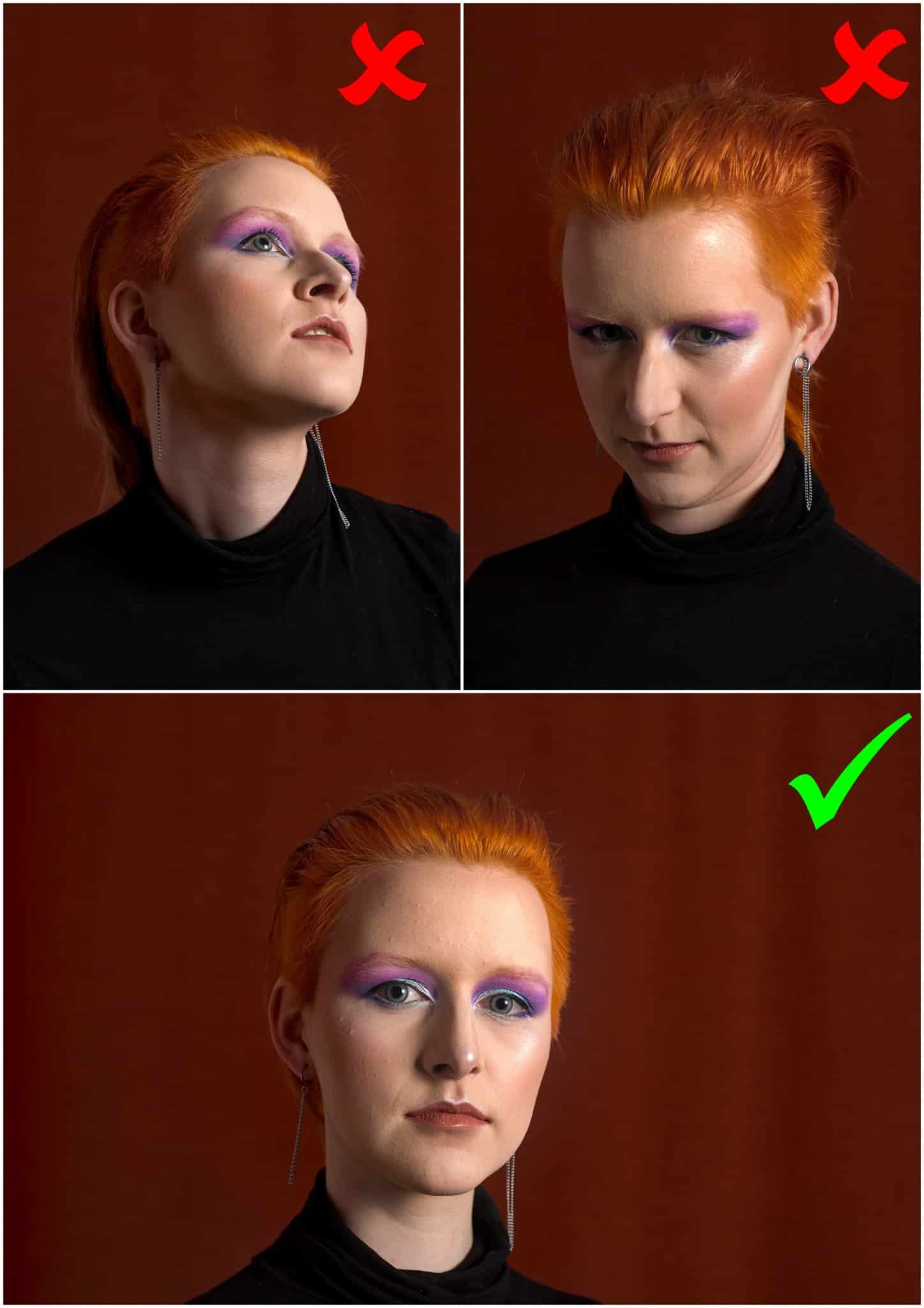
Nikon D750, Nikon 50mm f/1.4 AF-S NIKKOR G, 1/125 s, f/4.5, ISO 200, focal length 50 mm.
The Best Retouching Approaches
Here I’m heading onto thin ice. Everyone has different opinions on retouching; I’ll be taking the path of least resistance. Your model should still be recognizable after your edits. But at the same time, you should remove the biggest problems. You need to balance things to a place where she still has her facial features, contours, and humanity. But also one where she doesn’t have circles under her eyes, acne, or visible makeup crumbs.
The rule I try to promote is to leave the model with what is really hers. Acne is a passing skin problem; eczemas and rashes are the same. Circles under the eyes come from fatigue, not nature. But watch out for the difference between circles under your model’s eyes and her natural wrinkles. If you remove the natural wrinkling of the skin under her eyes, she’ll look unnatural.

Another thing it pays to focus on is damaged makeup. Visible mascara crumbs, imperfect lines on her eyelids, lipstick on her teeth. You can slightly whiten her teeth, but don’t overdo it. Yellow teeth aren’t “her” and can come from bad lighting or exposure. But I would still recommend just desaturating a bit rather than whitening. When teeth are unnaturally shiny, that’s not good.
The same goes for the whites of her eyes. Except that there I’d recommend truly minimizing your edits. For veins in her eyes, these once again may not be really “her.” If a vein is very striking, for example because she’s gotten something in her eye, then it should be harmless to remove it. But definitely not all of them.
And as for smoothing her face—or any other part of her body—that can be harmful. Keep her skin texture; just remove any pimples. Don’t drag down the Clarity in Zoner Photo Studio; that would turn her into a wax figurine. And she probably wouldn’t like that.

So—leave the model with what is her and hers. Wrinkles, the shape of her nose (which you also will have photographed from a good angle), the size and shape of her face, her skin texture, etc. And remove any passing problems. Acne, pimples, eczemas, scratches, bruises.
And if there’s something where you’re unsure, for example warts or spots, ask the model. Ask whether she’d like you to remove them or if she wants to leave them because they’re a part of her that she’s accepted.
An Enthusiastic Model = A Good Picture
In closing I’d like to say that it’s all about reasonable distance plus communication and respect. You have to be professional as a photographer. Your model is a person, they have feelings, and they have to feel good and safe. They have to feel beautiful and appreciated. Your model is the key to expressing your artistic intent, but she’s not an object. Talk to her, praise her, and don’t change her.
And meanwhile, don’t be too invasive and overly friendly. Leave her space and intimacy. Ask her questions and respect what she tells you.
Every model is enthusiastic when she’s treated well. If you have an enthusiastic model, she’ll look wonderful, relaxed, and satisfied. She’ll come back for future shoots, and she’ll praise you in front of others. And when your model’s happy, ultimately you’ll be happy too.
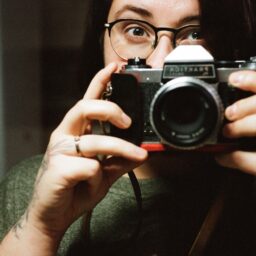
There are no comments yet.